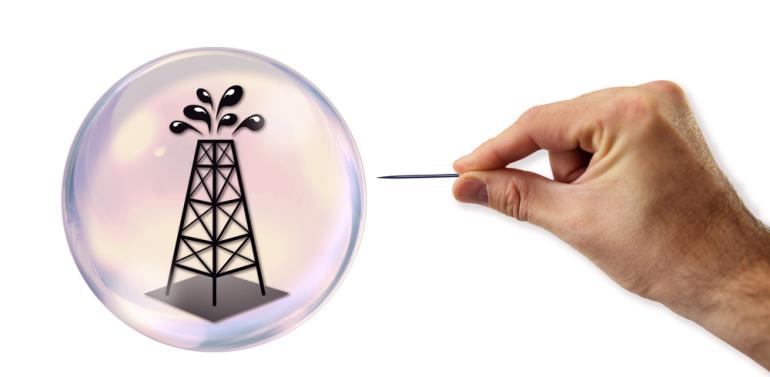International
Mystery Decoded – Why Oil Booms And Busts Happen

What if I told you that there was a period in history where oil demand declined by 5 million barrels per day and non-OPEC supply increased by 5 million barrels per day, yet oil price rallied more than 50 per cent? Would you believe me? If your answer is yes, then you guessed right. This was the period from 1979 to 1985; it was a period during which global oil demand declined from over 61 million barrels to 56 million barrels and non-OPEC supply increased from 32 million barrels to 37 million barrels. Yet prices rallied from $17 a barrel in 1979 to $26 a barrel in 1985, while reaching as high as $35 in 1981.
This illogical world of rising prices, collapsing demand and expanding non-OPEC supply was made possible by a 15.5 million barrels reduction in OPEC’s supply between 1979 and 1985 as OPEC cut production from 30.5 million barrels in production in 1979 to 15 million barrels in 1985, and most of that reduction was voluntary.
The maintenance of this artificially high price band by OPEC (at the expense of its production) led the oil majors to increase their capex from $24 billion in 1979 to as high as $44 billion by 1982, which naturally resulted in a drilling explosion with annual O&G wells drilled increasing from 66,000 in 1979 to a peak of 107,000 in 1984. This investment and drilling frenzy lead to more than a doubling in the Finding and Development (F&D) costs from $5 per barrel in 1979 to around $12 by the mid-1980s.

The increase in the F&D cost during that time was not the result of resource scarcity, or extraction complexity, it was the product of a substantial inflation in service costs due to an unexpected surge in activity caused by manipulated prices. Once OPEC ceased manipulating the market, prices quickly reverted back to their pre-manipulation economic equilibrium level in the mid-teens, while F&D costs settled back into the $5 a barrel range.

This unfortunate price manipulation episode by OPEC led to the creation of substantial overcapacity in the petroleum industry as it brought forward and accelerated the development of unneeded oil resources, it greatly reduced demand, and it created significant excess capacity within OPEC itself. It took the world until 1991 to achieve the same level of oil demand reached in 1979, then from 1991 it took the world a decade and a half of demand growth and the emergence of China in the early 2000s, to exhaust all that non-OPEC excess capacity and OPEC spare capacity that was created during the 1979 to 1985 timeframe.
The birth of a new bull market
The 1979-1985 oil bull market is what a manipulated market looks like, and this market has no resemblance to the bull market that preceded the current price collapse. Unlike the early 80s price surge, oil prices were not manipulated higher in the early 2000s, but rose due to natural supply and demand forces.
In 2005 oil prices averaged $54 per barrel, a near doubling from the $28 per barrel at the start of the decade. 2005 is often mentioned as the official start of the 2000s raging oil bull market that lasted for almost ten years, except for a brief interruption following the financial crisis.

Between the years 2000 and 2005 OPEC increased its crude and NGL production by 4 million barrels per day, inching up total production from 30.7 million to 34.8 million barrels, however this was insufficient to meet the over 7 million barrels per day growth in global demand growth during this period, with OPEC excess capacity virtually eliminated, the additional increase in supply had to come from non-OPEC sources.
However, after rising from 46 million bpd to 49 million bpd (all liquids) from 2000 to 2004; non-OPEC supply stalled at around 49 million bpd for 3 years from 2004 to 2006, before finally crossing into the 50 million bpd mark in 2007. The pressure on non-OPEC to increase production could only translate into a sizable increase in prices, which in turn encouraged the industry to significantly increase its capex spending.
-

 Leaders Speak2 months ago
Leaders Speak2 months agoDhofar International Development and Investment Company: Driving Sustainable Growth and Strategic Synergies in Oman’s Investment Landscape
-

 Economy2 months ago
Economy2 months agoMaal Card: What Oman’s New National Payment Card Means for Everyday Users
-

 Events2 months ago
Events2 months agoOER Corporate Excellence Awards 2025 Honours Entities and Innovations in Oman
-

 Banking & Finance1 week ago
Banking & Finance1 week agoOman Oil Marketing Company Concludes Its Annual Health, Safety, Environment, and Quality Week, Reaffirming People and Safety as a Top Priority
-

 News1 month ago
News1 month agoSheikh Suhail Bahwan, Chairman of Suhail Bahwan Group, Passes Away
-

 Economy2 months ago
Economy2 months agoOman Unveils Official Omani Rial Symbol in Landmark Move to Boost Global Currency Presence
-

 News1 month ago
News1 month agoOIG Appoints New CEO to Lead Its Next Chapter of Excellence
-

 News4 weeks ago
News4 weeks agoReport: How India & The Middle East Are Exploiting Immense Economic Synergies




























You must be logged in to post a comment Login